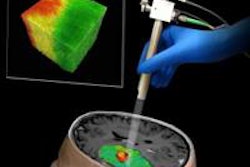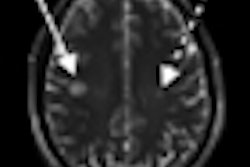Optical coherence tomography (OCT) can reliably yield high-resolution images of the carotid arteries of vascular disease patients before, during, and after stenting procedures, according to a study in the June issue of the Journal of Endovascular Therapy (Vol. 19:3, pp. 303-311).
In a study involving 25 patients undergoing carotid artery stenting, OCT had a success rate of 97.3% in its use before stent deployment, immediately after stent placement, and following postdilation of the stent. The research team from the University of Siena in Italy also found that the patients had no complications during the procedures or in the hospital.
The authors noted that OCT allowed physicians to see, among other details, rupture of the fibrous cap, plaque prolapse, and stent malapposition. Future applications could reveal further details that increase understanding of carotid stenting and influence clinical policies regarding it use, they said.
OCT might also be able to give carotid artery stenting a much-needed boost. The technique has not yet reached its predicted potential, in part due to a lack of reimbursement in the U.S. and mixed results from European trials. OCT, however, may provide evaluation of critical aspects of carotid artery stenting, and more evidence from OCT clinical research could help authorities realize the value of the procedure, according to the researchers.



















